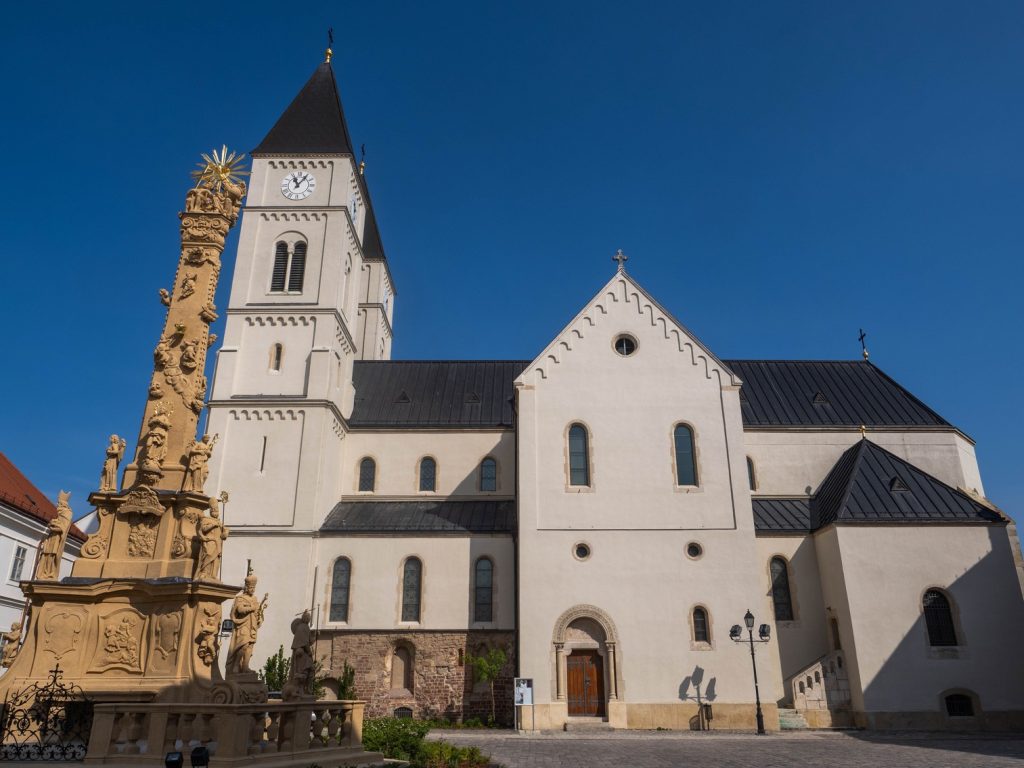The cathedral stands at the highest point of the castle hill, featuring medieval origins and incorporating elements of historicism, neo-Romanesque, and neo-Gothic styles. The Veszprém Bishopric was among the first to receive its donation letter from King Saint Stephen. The construction of the cathedral, which underwent several alterations, can be dated between 1030 and 1040.
The builder and patroness of the 11th-century Saint Michael's Cathedral was Blessed Queen Gisela. According to the customs of the time, the Bishop of Veszprém held the right to crown the queen and also served as her chancellor.
According to documents from the 14th and 15th centuries, the cathedral housed the head relic of Saint George, brought to Hungary by King Saint Stephen in 1008.
The cathedral was plundered and set on fire in 1276. In 1552, the castle fell into Turkish hands, and the fleeing bishopric could only return in 1628. Significant damage was caused to the building by imperial cannon fire in 1704. Following tumultuous times, it was clear that the castle quarter required a large-scale, comprehensive reconstruction, which was initiated by Count Imre Eszterházy with the reconstruction of the cathedral in Baroque style.
A XX. század elején Hornig Károly püspök megbízásából, Aigner Sándor tervei alapján, a főszékesegyház historizáló stílusban, gazdag kifestéssel és egységes berendezéssel megújult. A székesegyház 1981-ben basilica minor rangot kapott, és 1996-tól őrzi Boldog Gizella királyné ereklyéit.
A székesegyház az alábbi időpontokban látogatható:
TUESDAY-FRIDAY: 5pm-7pm
SATURDAY-SUNDAY: 10am-6pm
Látogathatósága a liturgikus alkalmakkor szünetel.
A Szent Mihály Főszékesegyház és annak altemploma vezetett várséta keretében is látogatható.

